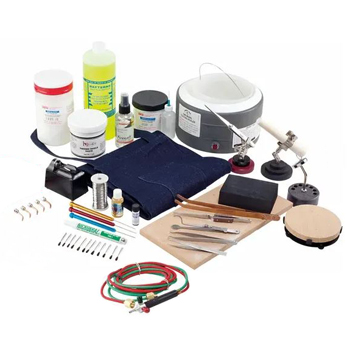Jewelry Repair
Posted on Wednesday, September 23rd, 2020
in Jewelry Repair.
Quality-made fine jewelry can last a lifetime. However, no matter how well you take care of your favorite pieces, you may be in need of an occasional repair from time to time.
Here are some of the most common types of jewelry repair:
- Gemstone replacement and setting: Gemstones can fall out of their settings for two reasons. The first is that the metal surrounding the gemstone has worn down overtime, leading to less protection for your gem. The second reason is that your jewelry piece was accidentally hit against a hard surface, causing the gemstone to loosen from its setting. If either of those instances occurs, you can take your jewelry to a reputable local jeweler and they’ll be able to properly set the gemstone back in its setting and replace the gemstone if needed.
- Ring resizing: Whether you’ve changed finger sizes over the years or have recently acquired a ring that doesn’t fit quite right, a jeweler can measure your finger and adjust the size of your ring accordingly to ensure a proper fit.
- Prong work: The number one cause of gemstone loss is inadequate prongs. As mentioned above, prongs can wear down overtime and may need to be re-tipped every once in a while to ensure the gemstones are secure.
- Gemstone tightening: For various reasons, gemstones can become loose in their setting. This increases the chances of accidentally losing a gem. To ensure your gemstones are secure, we recommend having your regularly-worn jewelry checked at least once a year by an experienced jeweler. They’ll be able to determine if any gemstones need tightening or if additional prong work is needed.
- Chain repair: When a necklace or bracelet chain breaks, the good news is that you can have a goldsmith solder the chain back together. When done properly, you won’t be able to tell whether or not the chain was ever broken.
- Pearl restringing: Pearls are often strung on a thin silk thread. Overtime, the silk wears down and may need to be replaced. So depending on how often you wear your pearl jewelry, you may want to have your pearl necklace or bracelet restrung every 2-5 years. If you’re not sure whether your pearl strand needs to be restrung, you can take it into a local jeweler or look for one of these signs: dirty thread, fuzzy knots, or uneven gaps between the pearls.
- Polishing and cleaning: Regularly-worn jewelry pieces, such as engagement rings and wedding bands, will likely develop scratches and a dull appearance overtime. If you want your jewelry looking shiny and new again, we recommend having your pieces polished and professionally cleaned.
- Rhodium plating: Most white gold jewelry is coated in a thin layer of rhodium (a precious white metal). This helps give the jewelry a bright, white finish while also reducing the chance of the wearer developing an allergic reaction. Overtime, this plating wears down and the jewelry piece can take on a yellowish color. When this happens, you may want to bring in your jewelry to have it re-plated.
- Clasp replacement: There are two reasons why you might need a clasp replaced. The first is that your clasp broke and can no longer hold your chain together. The second reason is that you can no longer easily put on and remove your jewelry because the clasp is too difficult to work with. There are a variety of different clasps available so finding one that suits you and your jewelry piece should be relatively easy.
- Engraving: While not really considered a repair, but rather a type of service commonly offered by jewelers, engraving allows you to have a special message, date, or name inscribed on a piece of jewelry.
If you’re in need of one or more of these jewelry repairs, feel free to contact us at 414-276-2457 or info@kloiberjewelers.com. We have a talented team of experienced goldsmiths who can expertly repair any type of fine jewelry. Courtesy estimates are provided for all our jewelry repairs so you’ll know how much a certain repair will cost before deciding whether or not to go ahead with it.


